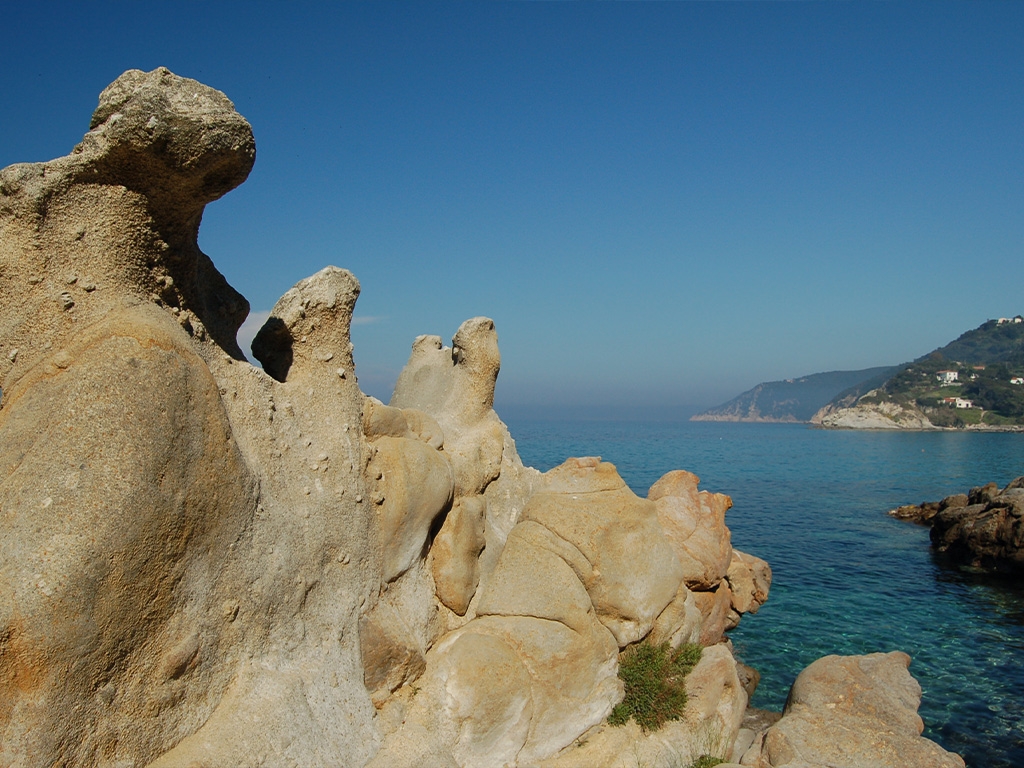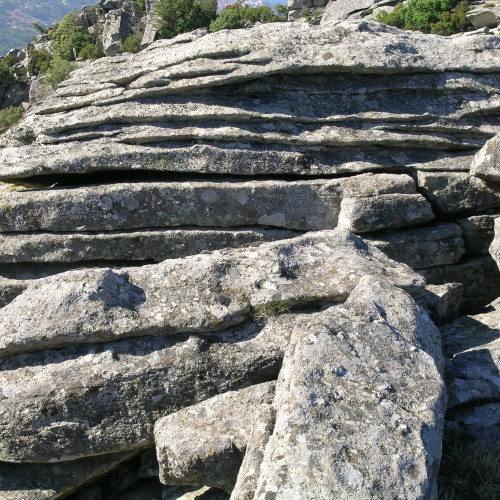
Forms of granite erosion
Although the granite (granodiorite, to be specific) that forms Mount Capanne is considered a very hard and strong rock, time and weathering slowly but surely erode its surface, resulting in shapes and unique structures typical of areas where this intrusive igneous rock is found.
Over the millennia, a combination of the chemical and physical actions of natural elements such as water, wind, cold, sunshine, sea spray and biotite oxidation processes have cut into the great blocks emerging from the slopes, forming 'tafoni', distinctive cavities in the rock often found in seaside and desert areas. Nature, as if by magic, has sculpted the slopes and coasts of Mount Capanne, forming unique structures and genuine natural monuments, sometimes with zoomorphic or anthropomorphic features. Some of these formations have sparked the imaginations of people, particularly the shepherds and farmers who once walked the paths of western Elba each day and encountered these genuine stone monsters, inspiring imaginative folk stories.
The best-known formations include the Aquila (eagle), near the Sanctuary of the Madonna del Monte, the Omo Masso (boulder man), whose head was destroyed by lighting during a storm in 2004, the gigantic Testa (head) on San Bartolomeo hill, and La Sedia di Napoleone (Napoleon's chair), an armchair-shaped rock from which, legend has it, the exiled emperor embarked. These natural sculptures have many names, often still to be found on modern topographic maps, accompanied by terms referring to rocks such as cote, masso, tozza and pietra. Dotted around the slopes, these were genuine reference points and markers for the people who lived and worked in the agricultural and pastoral mountain setting. These natural monuments and sculptures also provide food for the imagination, enabling each person, when observing them from different angles, to enjoy making out different shapes.
For this purpose, a journey of discovery of these natural masterpieces, known as mostri di pietra (stone monsters), has been set up on the first part of path no. 103, leading from Marciana to the Sanctuary of the Madonna del Monte.
(Antonello Marchese, translation from Italian)





